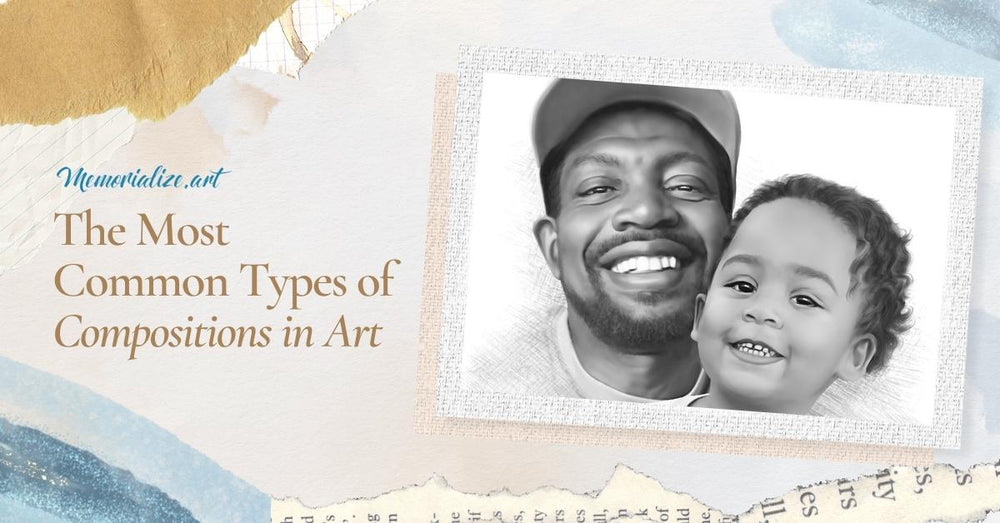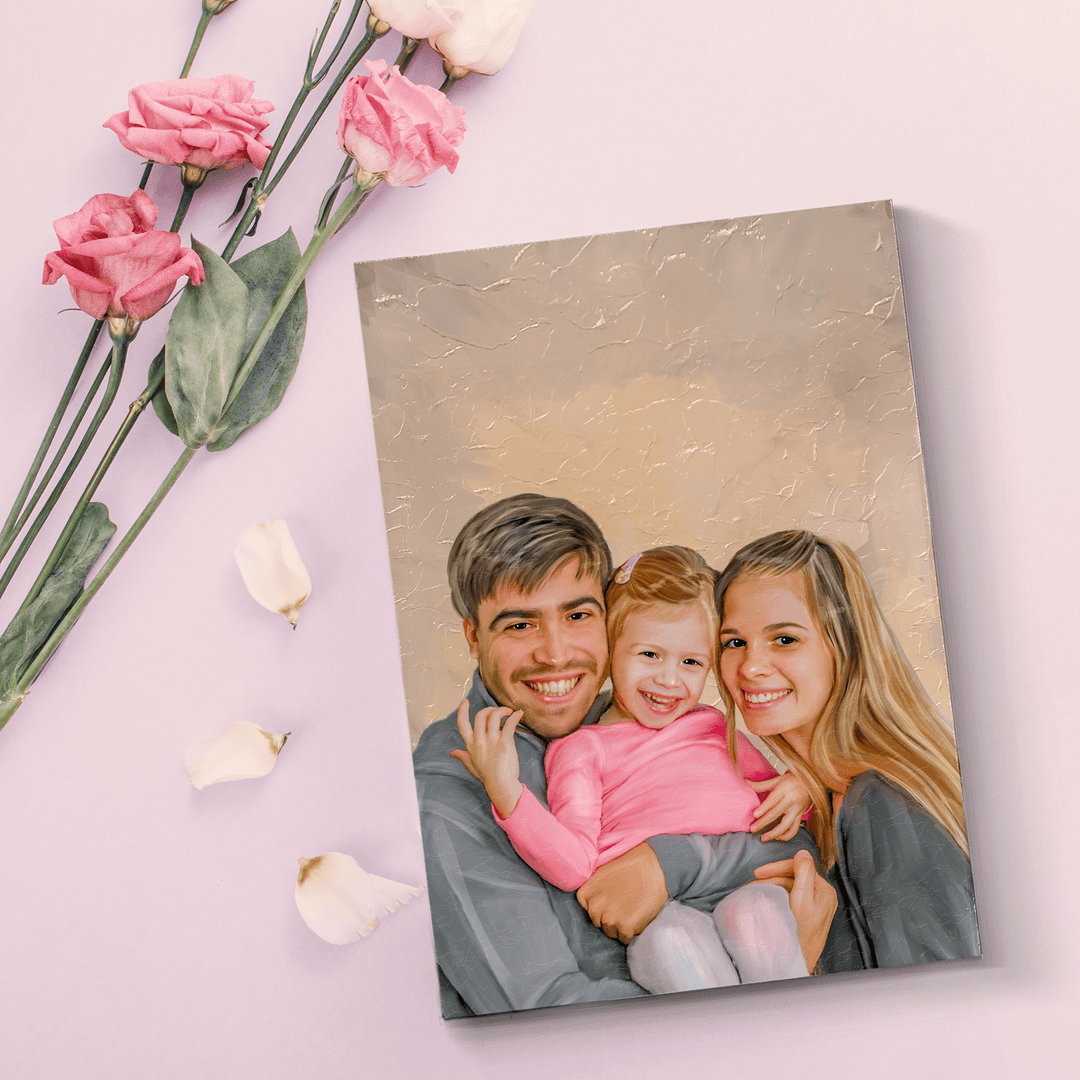The 5 Most Common Types of Compositions in Art

Compositions come in many different forms, and artists utilize them to organize materials in their works of art. From the captivating strokes of a painter's brush to the intricate arrangement of elements in a photograph, compositions play a fundamental role in creating visual harmony and evoking emotions in the minds of viewers.

Photo by Steve Johnson from Pexels
Let your imagination roam free as we explore the techniques, symbolism, and emotions behind each composition, and perhaps, you might find your own artistic voice along the way. Whether you're an aspiring artist seeking to improve your craft or simply an art enthusiast eager to deepen your understanding, this article unfolds the 5 most common types of compositions in art.
What is composition in art?
Composition in art means how the different parts of an artwork are put together. These pieces of art can be put together and arranged in different ways to make a certain design. Composition is a way for an artist to show specific feelings, tell a story, or show what something means in a single order. Composition doesn't have a single rule, but artists use different concepts to make compositions that say what they want to say.
Different types of composition
Symmetrical Composition
Symmetrical composition is a captivating type of visual arrangement that exudes a sense of balance and harmony. In this artistic approach, elements within the frame mirror each other across a central axis, creating a striking equilibrium that draws the viewer's attention.
The symmetrical design often instills a feeling of stability and order, making it a popular choice in various art forms, including photography, painting, and architecture.
Rule of Thirds
The rule of thirds is a fundamental principle of composition in art and photography, used to create visually appealing and balanced imagery. The concept involves dividing an image into a grid of nine equal parts, formed by two equally spaced horizontal and vertical lines, resulting in four intersection points. The rule suggests placing key elements of the composition along these lines or at the intersections, rather than at the center, to add dynamism and interest to the artwork.

Order Your Personalized Watercolor Painting Here
For example, in a personalized watercolor painting, the artist might apply the rule of thirds by positioning the main subject, such as a portrait, at one of the intersecting points, while surrounding it with complementary elements like flowers or natural scenery along the other lines. By doing so, the artist achieves a balanced and aesthetically pleasing composition that guides the viewer's gaze through the artwork effortlessly, enhancing the overall impact of the piece.
Asymmetrical Balance
Asymmetrical balance is a type of composition in art where elements are arranged in a way that creates a sense of equilibrium without relying on symmetrical mirroring. This technique involves distributing visual weight unequally throughout the artwork, yet achieving a harmonious and balanced overall effect.

Purchase Your Custom Children Pencil Drawing Here
An example of applying asymmetrical balance can be observed in the Children Pencil Drawing. In this artwork, the artist skillfully places the subjects off-center and uses varying sizes, shapes, and textures to create a dynamic yet balanced composition. The viewer's attention is drawn to the interaction between the children and the surrounding environment, resulting in a captivating and engaging piece of art. The intentional asymmetry adds a sense of movement and liveliness to the drawing, making it a compelling representation of youthful energy and innocence.
Golden Ratio (Fibonacci Spiral)
A mathematical notion known as the "golden ratio" describes a situation in which the ratio of two numbers is about 1.618. One illustration of this ratio is seen in Fibonacci's spiral. Compositions like this one are popular among artists because it is thought to produce works that are visually harmonious and aesthetically beautiful.
Diagonal Composition
Diagonal composition is a dynamic technique in art that adds movement and energy to a piece. Elements are arranged along diagonal lines, creating a sense of flow from one corner of the canvas to another. This technique injects drama and tension into the artwork, guiding the viewer's gaze and creating a focal point. It's versatile and used in painting, photography, and graphic design.

Grab Your Custom Couple Acrylic Painting Here
In a couple acrylic painting, the artist might employ diagonal composition to evoke a sense of intimacy and connection between the depicted individuals. The painting creates a sense of motion and connection between the couple by positioning them along intersecting diagonal lines. This emotionally involves the viewer in their shared moment. The diagonal lines direct the viewer's eyes across the artwork, emphasizing the connection between the two individuals and adding depth and fascination to the painting.
Tips for choosing the right type of composition for your artwork
Learn about the components of a composition
Understanding the key components of types of composition in art is essential before choosing one. These include principles of composition like perspective, leading lines, negative space, focal point, symmetry, asymmetry, and balance. Learn about these ideas and how your artwork's overall aesthetics and message are affected by them.
Establish Your Creative Goals
Define the purpose and message you wish to send with your artwork. Having a defined objective, whether it's a feeling, a narrative, or a specific concept, will lead you in selecting a composition that matches your artistic vision.
Consider the Subject Matter
Your choice of design should be based on what your art is about. Some themes might look better with a centered composition, while others might look better with a diagonal or off-center arrangement. For example, the "rule of thirds" is a good way to arrange a landscape, while a portrait may focus on a single topic.
Dynamic Compositions with Memorialize Art
Are you searching for exquisite artworks to commemorate special occasions? Discover the exceptional Memorialize Art artistic gallery, crafted by immensely talented professionals. Their collection showcases a diverse range of masterpieces, all of which embody the most common types of compositions in art.
Whether you're drawn to the captivating balance of symmetrical arrangements or the energy of asymmetrical designs, their customized artworks have it all. Embrace the beauty of dynamic compositions that exude movement and liveliness, capturing the essence of life's fleeting moments. Celebrate life's moments with a touch of artistic brilliance and emotional depth. Contact them today and find the perfect piece to cherish memories forever.










